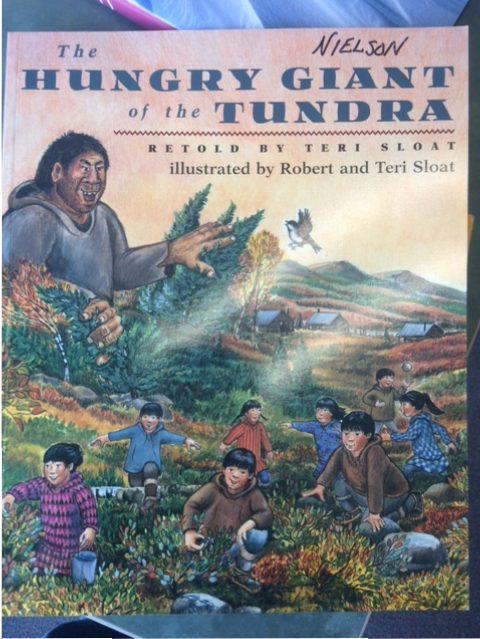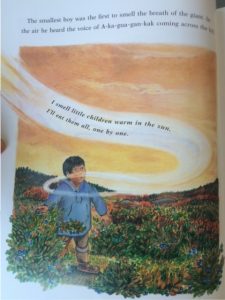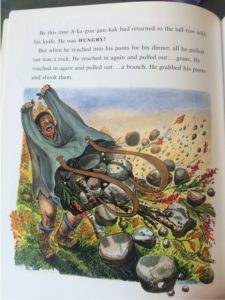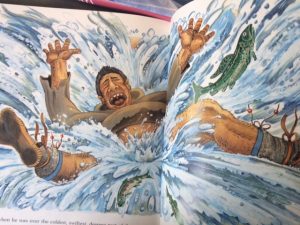In the time allotted for the picture book section in class, I read through 3 of them and looked at and quickly dismissed 2 more. Honestly, I found two of the three I read to be rather boring, moralistic, pedantic, and badly written. I think that, in general, one really needs to have a good, well-written story to catch students’ attentions if one is to use picture books at the secondary level.
The major exception among the books I read was a book entitled “the Hungry Giant of the Tundra.” It was engaging from front to back. The illustrations were crisp and colorful and beautiful, and the faces very much had the look of the Yup’ik people, whose story the author claimed to be retelling.
The basic plot of the story was that there were these kids playing out on the tundra and they were supposed to come back in at a certain time. But they were enjoying themselves, so they stayed out and got captured by this ugly child-eating tundra giant.
With the help of some animal friends, they elude the giant, and one of the animals even kills him.
The moral of the story of course is that kids should obey their parents.
As it is told, the story reminds me greatly of the traditional European fairy tale “Jack and the Beanstalk.” I am wondering, since we are informed that the story is “retold” by the book’s author, whether or not there is any European cross-pollination in the plotline. A way I could see using it in the classroom (especially in a Lit class) would be to find a more traditional telling of the story in Yup’ik terms and then place it next to Jack and the Beanstalk and ask the kids to compare and contrast the three, trying to answer the question of how, if at all, Jack and the Beanstalk may have influenced the retelling of this Yup’ik tale. I think it would be an enjoyable question to answer, and could get kids thinking about the way stories can be retold in later settings and by later people. I might even ask them to prepare a retelling of another story for me, or perhaps a retelling intentionally peppered with elements of another tale. It could really be a lot of fun.




I appreciate your honesty Ed and I definitely agree that a children’s story better be Light-Speed awesome if it’s going to capture the attention of secondary students.
This book caught both my and Erin’s eye as well. Which is a great and necessary start (the art has to be really good).
Also, good speculation on Jack and the Bean Stalk cross-pollination (no pun intended I’m sure). I like your compare and contrast idea and your focus on the morphing of story over time.
(First of all, thank you for prompting me to look up the word “pedantic.”)
Otherwise: I like how this book titles itself as “retold be” instead of the author claiming full credit.
It’s always interesting to think about where stories “originate.” For a long time, I believed that every modern story line stemmed from Shakespeare because that’s what an English teacher told me. (By that standard, I guess that means all other stories are “pre-literature…)
I have strong doubts about your old English teacher’s claim about Shakespeare. Maybe you could say that his work reflects every modern type of categorization, according to a certain schema. But certainly not every storyline stems from him, for heaven’s sake. I mean, plot lines about not knowing who you are have been around in Western drama since at least Oedipus Rex, and stories of betrayal by family (etc.) go back at least as far as Genesis.